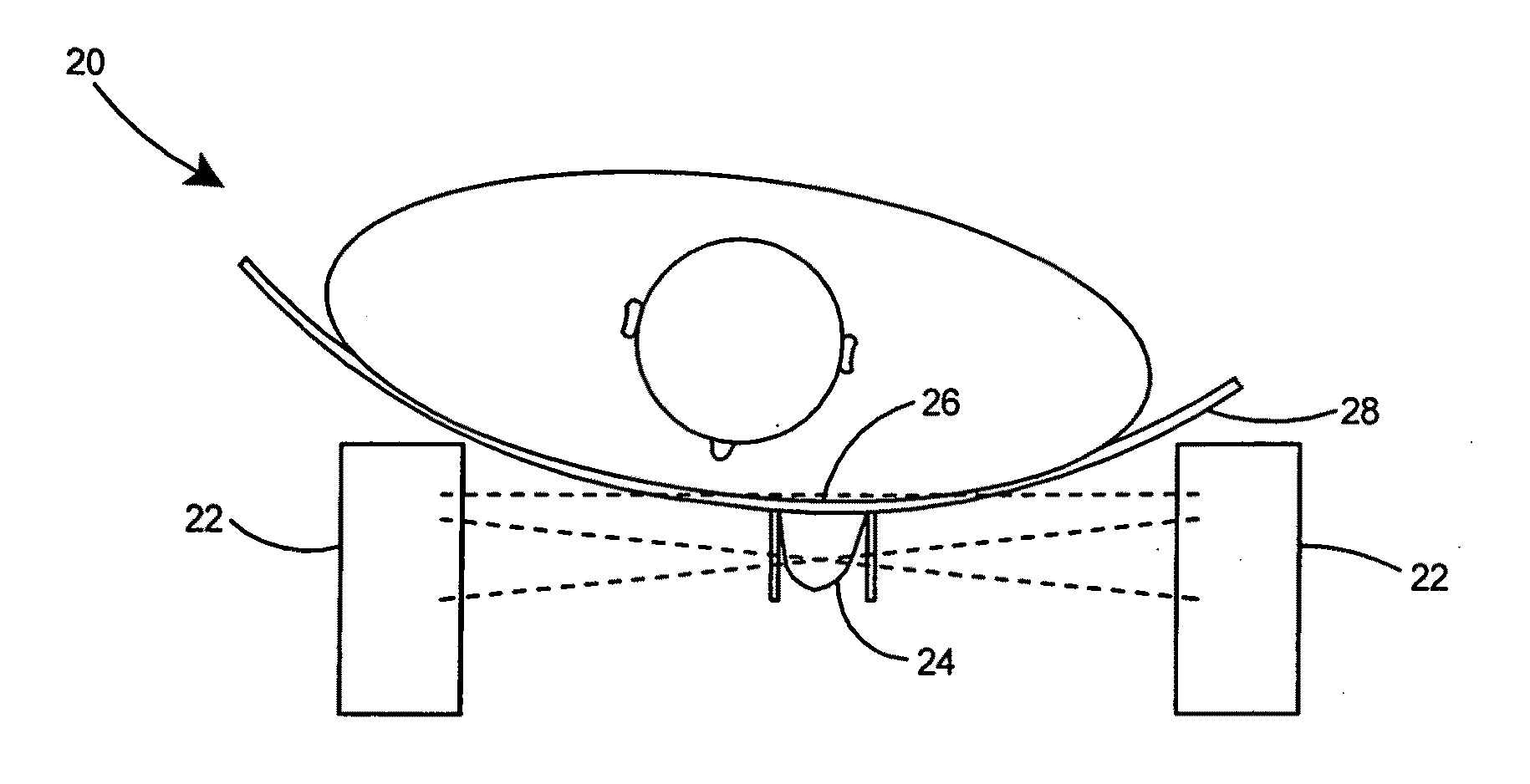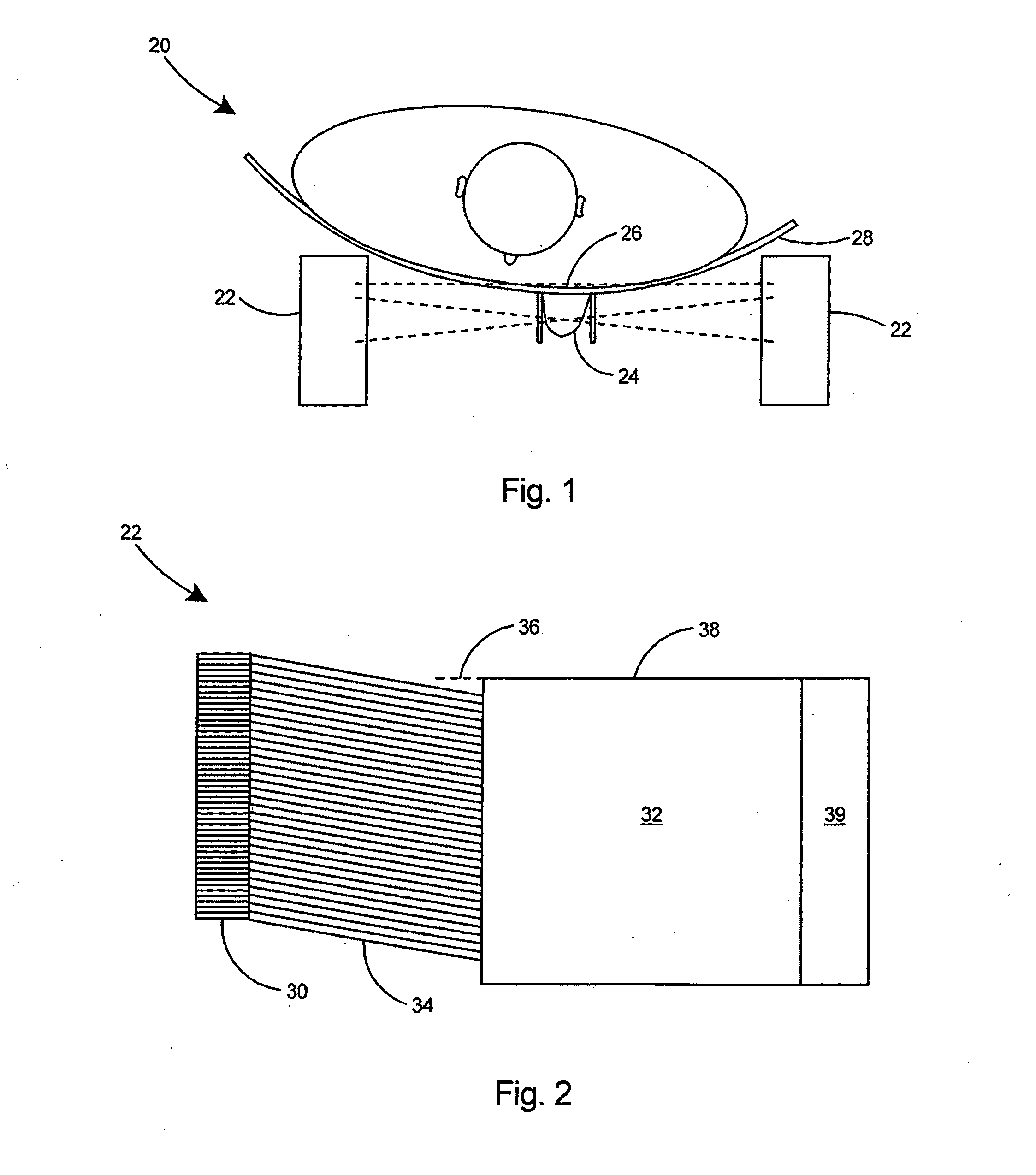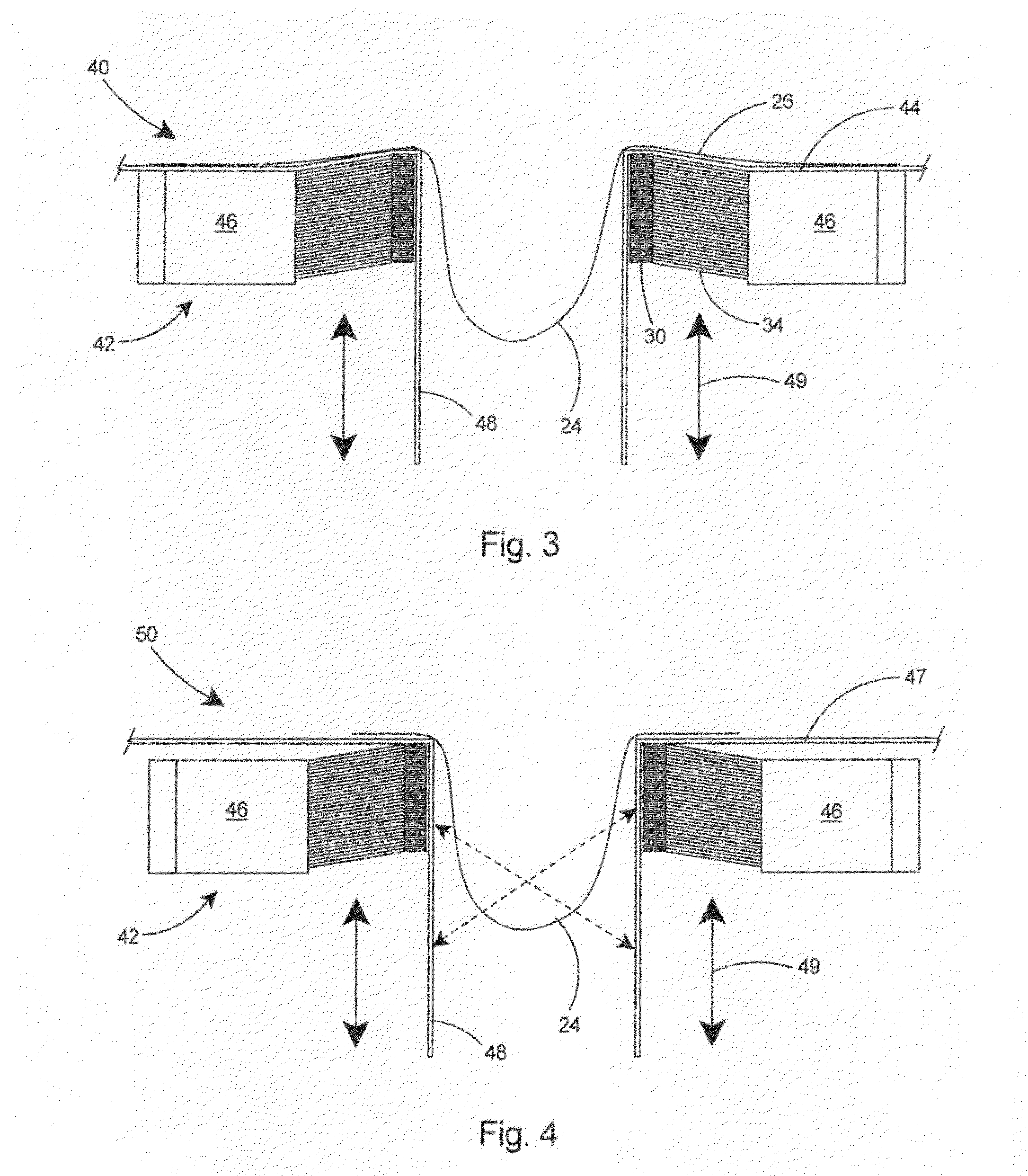High resolution PET breast imager with improved detection efficiency
a breast imaging and high-resolution technology, applied in the field of breast imaging, can solve the problems of poor specificity of the type of suspicious structure seen on the mammogram, inability to achieve spatial resolution of standard imaging instruments, and inability to achieve x-ray imaging techniques
- Summary
- Abstract
- Description
- Claims
- Application Information
AI Technical Summary
Benefits of technology
Problems solved by technology
Method used
Image
Examples
first embodiment
[0080]With reference to FIG. 1 there is shown a breast imaging system 20 according to the present invention including a set of photodetector modules 22 viewing the breast 24 in a lateral position and with the detector heads raised past the edge of the chest wall 26 to permit efficient detection of lesions in the breast region close to the chest wall. The imaging system includes lateral imaging geometry with the detector heads 22 put further apart with one or two detector heads 22 raised past the edge of the chest wall 26 to permit efficient detection of lesions in the breast region close to the chest wall 26. The light-weight patient bed 28, which is preferably constructed of hard plastic or a carbon-fiber matrix, has a shape approximating a fraction of a cylinder to facilitate placement of the detector heads 22 higher than the chest wall 26.
[0081]The second and preferred embodiment of the imaging system of the present invention includes a ring of detection modules surrounding the i...
second embodiment
[0084]the breast imaging system 60 is depicted in FIG. 5. In the embodiment depicted in FIG. 5, two rings of imaging modules 46 are provided, including a top imaging ring 62 and a bottom imaging ring 64, and the whole set of imaging rings 62 and 64 can be moved vertically to cover the whole volume of the breast 24. In this particular embodiment the dead edge at the PMT perimeter 66 results in a small physical gap 68 between the two imaging rings 62 and 64. The impact of the gap 68 is minimal on the final quality of the reconstructed images. If desired, additional detector rings could be added to create a breast imaging system with three or more rings (not shown) to eliminate the need for vertical scanning and cover the whole breast volume without requiring movement of the detector rings.
[0085]In the breast imaging systems of the present invention, the breast to be imaged will be pending through the inner tube 48 in the patient bed 44 as shown in FIG. 5. An alternative embodiment for...
third embodiment
[0087]FIG. 6B depicts a top view of an imaging system 78 similar to the imaging system of FIG. 6A but in which the imaging modules 72 are in two imaging ring sectors 79A and 79B. The imaging modules 72 are rotated around the breast (not shown) to provide all the angular views that are necessary for 3D tomographic reconstruction. This embodiment of the breast imager 78 is an economical arrangement composed of two imaging ring sectors 79A and 79B only. This embodiment of the breast imager 78 offers convenient side ports 80 for installing a biopsy device. The imager 78 provides the convenience of performing the biopsy procedure while imaging the breast. By using a radioactive tip biopsy needle (not shown), the needle tip is guided to the lesion by the imaging system 78.
[0088]Referring to FIG. 2, a dedicated breast PET imager according to the present invention could include several imaging technologies. The preferred general type of a solution will have a scintillator sensor 30 as a sen...
PUM
 Login to View More
Login to View More Abstract
Description
Claims
Application Information
 Login to View More
Login to View More - R&D
- Intellectual Property
- Life Sciences
- Materials
- Tech Scout
- Unparalleled Data Quality
- Higher Quality Content
- 60% Fewer Hallucinations
Browse by: Latest US Patents, China's latest patents, Technical Efficacy Thesaurus, Application Domain, Technology Topic, Popular Technical Reports.
© 2025 PatSnap. All rights reserved.Legal|Privacy policy|Modern Slavery Act Transparency Statement|Sitemap|About US| Contact US: help@patsnap.com



